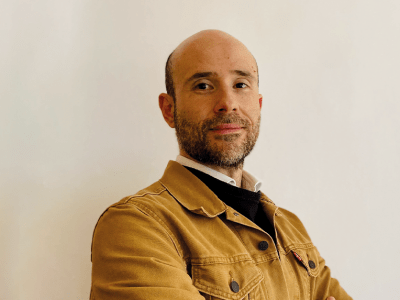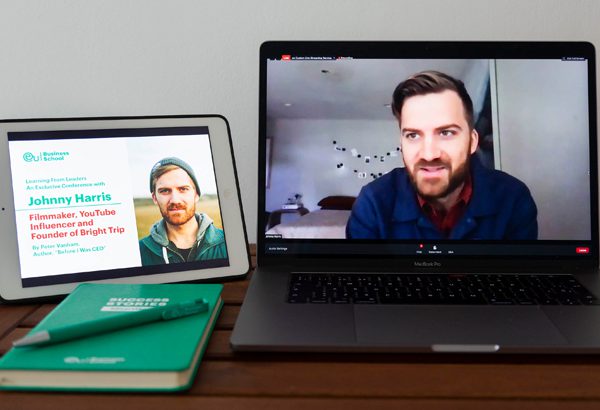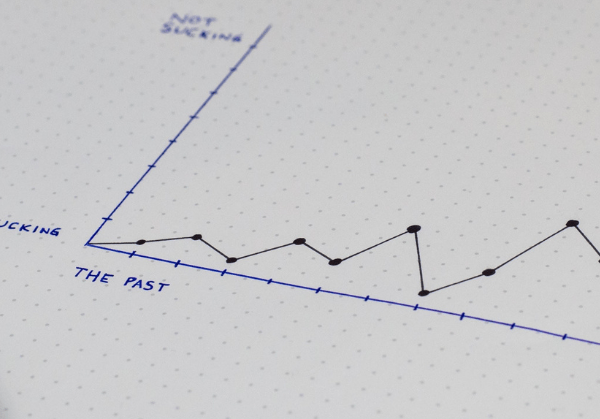How COVID-19 Will Impact Organizational Design – Emma Giner
Emma Giner is an organizational design expert. Having risen through the ranks at global conglomerate Inditex, she’s gained a deep understanding of the structures and strategies needed to operate a successful international business.
The swift change brought about by the global pandemic is unsettling, but also represents a valuable opportunity. In her recent virtual guest speaker session, Emma introduced students on our Barcelona campus to the factors that gave rise to the organizational structures in play today, and illuminated a path towards positive change.
In this blog post, we review the key points covered in Emma’s insightful session.
Where Are We Now?
Politicians, journalists, friends and colleagues – whoever you speak or listen to these days is likely to note that we are living in unprecedented, uncertain times. However, as Emma pointed out, the world was not stable before the pandemic broke out. We were already living with uncertainty, facing huge challenges and threats, notably climate change.
The changes we are witnessing, although they’ve been sped up, were already inevitable. We have been, and continue to be, operating in a VUCA environment: volatile, unstable, complex and ambiguous. But that doesn’t have to be a bad thing. Humans have a taste for adventure and, although we’ve been told we don’t like change, that notion, is a 20th-century invention according to Emma.
So, what can we learn from changes we’ve already experienced, and where do we want to end up?
Making Sense of It All: The Big Shift
The period of significant change that followed the global recession of 2008 has been described as the big shift.
Emma outlined two forces that played a significant role in shaping the organizational structures in place today. Firstly, the rise of digital technology. Since 2005, digitalization has been a powerful influence on how we work. And secondly, the free movement of people and ideas. Both the rise of air travel and the ubiquity of the internet have meant that information and cultural references are shared globally.
As the foundational force of digitalization powered the free movement of knowledge and talent, the playing field became more equal. Big companies had the same ability to share their ideas as individuals, enabled by platforms such as LinkedIn. Global access to the same information accelerated the pace of change and, where distinct cultural approaches had existed in countries on either side of the world, colleagues living on different continents now had a shared understanding and approach to work.
To further explain this, Emma outlined two leitmotifs that characterized the big shift.
The first is ‘from stock to flow’. This indicates the move from ‘stock’, when information was controlled and accessed by an expert elite, to ‘flow’, when information became freely accessible.
The second leitmotif is ‘from push to pull’. The way organizations manage their resources has changed. ‘Push’ reflects traditional, hierarchal organizational structures with clearly defined job roles and outputs. Forecasting was straightforward and reliable; budgets were allocated and positions filled based on accurate predictions of work to be completed over a given period. Conversely, ‘pull’ refers to the fluid, project-based work that is increasingly common. Consumer behavior has become unpredictable and forecasting less accurate as markets and opportunities shift. This has led to an increase in freelance and gig-economy work.
COVID-19 has thrown these shifts into sharper relief. The old status quo dictated that strategy was set by people at the top of an organization’s hierarchy to determine what needed to be done. Managers would then determine how it would happen and, finally, operations would execute the plan. For many organizations this gap between top-level strategy and ground-level execution has caused significant challenges as decision-makers are out of touch with clients, customers and other end-users who typically only interact with operations. During a crisis, strategy needs to be revised and implemented quickly and executives who need to first understand the existing customer experience are at a significant disadvantage.
By highlighting this and other shortcomings of traditional organizational structures, COVID-19 is accelerating the pace of necessary change. Companies have been forced to modernize, for example by embracing a move to remote working. Those with less rigid structures have been able to adapt faster and take advantages of new opportunities as they arise.
This abrupt set of changes offers an opportunity to create new and more effective organizational paradigms.
Organizational Structures: Four Generations Working Side By Side
In order to understand the possibilities for organizational design moving forwards, it’s helpful to understand the various structures that already exist.
Emma outlined four models which can be found in companies operating today.
Hierarchy (1946-1964): This traditional top-down model saw orders filter from a single figurehead to departments via a management layer. There was no cross-team collaboration.
Horizontal (1965-1976): This model began to flatten the structure, spreading power at the top and introducing internal communications. Teams began to collaborate.
Flat (1977-1992): This generation saw no need for a hierarchy. Each staff member was fundamental to the proper running of the business and the focus was on getting things done.
Holacracy (1993 -…): This model may hold the key to the future of organizational structure. It reflects how Gen Z see themselves as a set of skills and their career as an experience, rather than a direct path to a title and salary. Emma helpfully compared this paradigm to the way the film industry operates. A team comes together around a project and, once the project is completed, the team dissolves. Members of the team may come together again on another project but could take on different roles, much in the same way an actor in one film might produce or direct another.
There’s been plenty of debate about the advantages and disadvantages of flat and holocratic working structures, as there were about the hierarchal and horizontal models that came before. No single approach offers all the answers and must be considered in tandem with the shifts we’ve already explored.
To identify the best path forward, Emma turned to economics.
Where Do We Go From Here? Doughnut Economics
Economics has a fundamental role to play in safeguarding the future of our planet. How we shape our organizations should be informed by the economic system we want to create.
In the 20th century, economics revolved around a circular flow of money and goods in a model that disregarded both people and the environment. Clearly this approach will not encourage the development of a sustainable economy.
How then can we manage climate change and ensure a future for humans on this planet?
Emma cited the much-lauded book Doughnut Economics by Oxford University economist Kate Raworth.
Kate’s doughnut model demonstrates that to be sustainable the economy must exist between the ecological ceiling and the social foundation. Similarities can be seen between this model and the United Nations’ Sustainable Development Goals, which offers an organizational roadmap to sustainability. Although Kate argues that the SDGs do not go far enough, they are a step in the right direction.
Anyone starting an enterprise today should look to the SDGs and beyond, to the doughnut model, if they wish to create a sustainable business that will thrive for generations to come.
Shaping the Organizations of the Future: Making Them Human
Emma concluded by sharing insights from her experience working with clients including L’Oréal, Coca Cola and Euroleague Basketball. Her aim as an ‘Organization and People Shaker’ is to move companies towards a leaner, more agile and operationally effective way of working so they can thrive in VUCA environments.
Emma has seen how fundamental the secondary web of relationships within an organization is to success and profitability. Understanding the social connections formed between colleagues from shared experiences and opinions can unlock business success. This web is not organized and does not respect hierarchies but highlights the importance of paying attention to the personalities within a company, and in providing time for colleagues to connect on a social level.
Reflecting on this insight as well as the various organizational and economic models covered in her session, Emma offered the following advice to EU students:
- Ignore what is being said online about going ‘back to normal’ once this crisis is over. We don’t want to go back to where we were. Take this opportunity to create a new normal, a better world. If we go backwards, we may end up back here again.
- Consider the DNA of the company and talent you’re creating or working with. Hierarchy won’t help to get the job done. Organizations need to be more human. Consider your mission and the people you work with in the context of a question: what can you bring to the world?
- Remember, the economy is planetary, it is no longer local. Everything we do and create has an impact on the people and the world around us. When starting a business or a project, make sure that the impact you’ll have is positive.
- Younger generations have valuable ideas and feedback to offer older, more experienced professionals. Senior co-workers benefit from the technical and digital understanding of younger employees and their ability to navigate our ever-changing world. Play an active role, voice your ideas and opinions because everything that’s being created now will be much more sustainable if we’re in it together.
Prepare for Business Success at EU Business School
If you’re looking to make your mark on the world as a forward-thinking business leader, start your journey with EU Business School. Our experiential approach to education will ensure that you graduate equipped with theoretical knowledge that is underpinned by case studies and insights from global industry experts, ready to embrace your career.
Find out more about our programs, such as our BA (Hons) in Business Management (Human Resources Management) or our Master in Innovation & Entrepreneurship to start your journey today.










